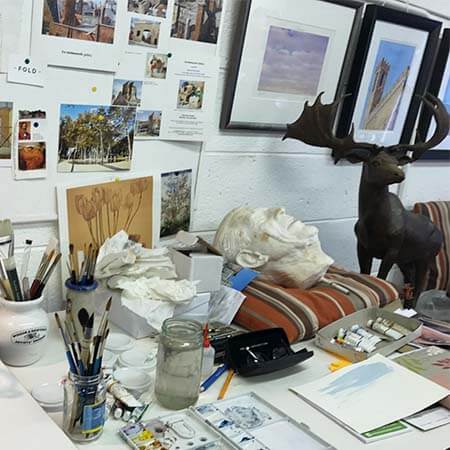Skytango is an online platform for the buying and selling of drone video footage.
Irish woman Susan Flynn is Skytango’s chief operating officer. Her husband Steve, from Minnesota, is its chief executive, a job he’s been preparing for since he was seven years old: “Back in the day, you’d spend three months building a balsa wood and styrofoam airplane and it would take-off and you might have a thirty-second flight and it would explode into pieces, and you’d go back and work for three months to rebuild it. Now you can pull a drone out of a box and launch it, and it’s really fun. It’s a whole skill you can develop”.
“But then,” he continues, “as soon as you try and fly a camera that’s worth a hundred thousand euros, and it’s zipping through the sky at sixty miles an hour, it resets the bar for stress. You have to have a certain type of personality and a certain sort of approach to it. Because when it goes wrong, it goes wrong in a second. It’s over”.
It’s quite a big vision of how the industry could actually function
Steve and Susan have won multiple Emmy awards for their work in film and television in the US. In the film business, some filmmakers will go further than others to get the shot. And if that means inventing some new piece of kit to make it happen, that’s what they’ll do. James Cameron is one of those guys. Steve Flynn is another.
But Skytango is more than a new piece of kit. It represents a whole new vision of how to get the shot, sell the shot, buy the shot, licence the shot, get permissions for the shot. It establishes an online business platform where none existed before – for a business that mostly happens about four hundred feet above your head. It’s based on the realities of a market that’s only five or so years old – and on the need that every new industry, especially an airborne one, has for solid foundations.

Samuel Beckett Bridge over the River Liffey. Images courtesy of Skytango.
Steve: Back in the 90’s I was drawing-up plans to make a fixed wing, four-engine aeroplane, that would carry a video camera. I imagined flying them down the city streets on commercial shoots. That would have been 1994 when I started playing around with radio-controlled aircraft, but the cameras were too big. So when we came here [Steve and Susan moved to Ireland in 2012], I saw a friend of mine back in the States had posted on Facebook about a drone he was looking at buying and I thought well, let’s start an aerial company. I figured it’d be a pretty straightforward process with our background in film and television.
Sue: We were only the second licensed company in Ireland. At that time, aerial footage at the altitude you could take it with a drone was very rare so then we had this idea of, well, what if we built a stock library? So we applied for and got an online voucher from LEO and that allowed us to explore what it would look like. That was the first step towards something more than just flying. But then we brokered a deal with the OPW and they facilitated us getting onto their sites if they could. We didn’t really know it at the time but what we were doing was creating a strategic partnership for a bigger business. It just seemed like a good idea at the time. I’ll just say this not because I’m married to him but Steve’s always ahead of the curve on this kind of stuff!
We’re trying to win the hearts and the minds of the community as opposed to just trying to deploy technology
Steve: What happened was we started going on jobs and it was hard to keep the rates high because people didn’t know how to value the service. We had sixty thousand dollars in equipment and insurance [Susan points out that money had been intended as the deposit for a house]. And we were also very keenly aware of the tensions that popped up between our customers and the owners of the land we were flying on, for instance.
One day it dawned on me that the basic problem was simply: how do you value compliance? So for me, it was how do I get customers to understand that they should pay more for the service that we provide, and the hazards and the risk? And for the customers it was: how do they know that what they’re hiring is going to be safe? It’s different faces of the same problem. And then we’d have people saying say, “I’ll just go up and launch the drone before the landowner turns up and then we’ll get out of here”. And you can’t build an industry that way.

A birds-eye view of Dublin’s St Stephen’s Green.
Sue: The idea’s essentially a three-sided marketplace. The first side is the pilots themselves. Then there’s the content buyers, the people who hire them. The landowners are the third side. The marketplace can perform without the landowners but our goal is to get them on board too because what we’re trying to do is funnel. If the owner of the land the pilot’s launching and landing from says, “you need permissions to do this” and their client is saying, “we want to know the provenance of this”, then pilots will naturally be funnelled onto the platform that complies with these needs – and that’s what Skytango is.
Eventually, we had a chance meeting at Enterprise Ireland and they said, you know, you’re a little early for our help with this marketplace idea, but why not try an accelerator like the NDRC. So we pitched to them and we got in, and it’s at that point that Skytango was formed.
